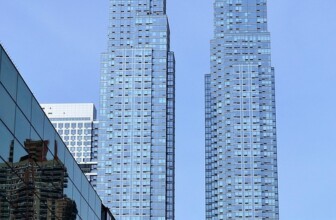Transforming Spaces: How Motivational Office Design Boosts Productivity and Well-being
Introduction
In today’s fast-paced corporate environment, the concept of motivational office design has gained immense popularity. Employers increasingly recognize that a well-designed workspace has a profound impact on employee productivity and well-being. Studies have shown that the physical environment can enhance cognitive function, improve mood, and promote overall health, thus boosting performance at work. This article will explore essential design principles that can transform office environments into motivational spaces.
Section 1: Understanding Motivational Office Design
What is Motivational Office Design?
Motivational office design refers to creating workspaces that inspire and engage employees, fostering a positive atmosphere. Elements such as layout, decor, lighting, and furniture are considered to encourage creativity and productivity. Importantly, motivational design is not just about aesthetics; it encompasses how a space functions and interconnects with its occupants.
Importance of Office Design
Office design is crucial for employee satisfaction. A motivating environment can lead to increased productivity, lower turnover rates, and higher employee engagement. According to a report by [Steelcase](https://www.steelcase.com/research/articles/topics/workspace/office-design-and its-impact-on-productivity/), well-designed workspaces can enhance collaboration and streamline workflows.
Section 2: Impact on Productivity
Connection between Design and Productivity
The link between office design and productivity is well-documented. Elements such as open spaces, breakout areas, and ergonomic furniture can lead to heightened focus and efficiency. According to research, workers in well-designed work environments report 20% higher productivity levels compared to those in poorly designed offices.
Case Studies on Productivity Boost
A study conducted by [Gensler](https://www.gensler.com/research-insights/publications/the-gensler-us-workplace-survey) revealed that workers who have control over their workspace design are 32% more productive. Companies like Google and Facebook have successfully implemented motivational designs that prioritize employee input and flexibility, resulting in increased innovation and productivity.
Section 3: Enhancing Employee Well-being
Physical Environment and Mental Health
Physical environment plays a vital role in employees’ mental health. Factors such as air quality, lighting, and noise levels can greatly influence mood and cognitive function. Research shows that natural lighting, for example, reduces fatigue and stress, contributing to an overall sense of well-being.
User-Centric Design Approaches
To enhance well-being, organizations are adopting user-centric design approaches. This methodology emphasizes involvement of the employees in the design process, ensuring that their preferences and needs are addressed. By creating a workspace that reflects their input, companies foster a sense of ownership and belonging among employees.
Section 4: Elements of Motivational Office Design
Natural Light and Its Benefits
Natural light is one of the most potent elements of motivational office design. Studies indicate that exposure to natural light can improve mood and increase productivity by up to 20%. Organizations can leverage windows, skylights, and open-air layouts to increase the influx of natural light in the office.
Color Psychology in Office Spaces
The psychological impact of color is significant in workspace environments. Colors can influence feelings of calmness, aggression, or focus. A well-informed palette, such as calming blues and energizing yellows, can create an environment that stimulates productivity and enhances creativity.
Section 5: Flexible and Collaborative Spaces
Creating Collaborative Workspaces
Designing areas dedicated to collaboration can drastically affect teamwork and innovation. Spaces equipped with movable furniture and technology to facilitate brainstorming sessions empower employees to work together creatively. For instance, dedicated huddle spaces can effectively encourage casual team interactions.
Flexibility in Office Design
Flexibility is critical in modern offices. Adaptable seating arrangements and multi-purpose spaces allow for both individual focus and group collaboration. Employers are increasingly opting for modular furniture to accommodate the changing needs of their workforce.
Section 6: Technology and Office Design
Integrating Technology in Office Spaces
The integration of technology into office design can streamline operations and enhance productivity. Smart office solutions, such as automated lighting and climate control, can create optimal working conditions. Additionally, collaborative tools like video conferencing software facilitate remote teamwork.
Smart Offices for Enhanced Workflow
Smart office designs enable seamless connectivity and efficient resource management. Utilizing applications that monitor and adjust a workspace’s environment contributes significantly to well-being and productivity. Companies like [Cisco](https://www.cisco.com/newsroom/releases/2020/20200228-3.html) have embraced this trend, showcasing the positive impact of advanced technological integration.
Section 7: Sustainability in Office Design
Sustainable Materials and Practices
Adopting sustainable materials in office design not only allows companies to reduce their environmental footprint but also positively impacts employee morale. Utilizing materials such as recycled wood and eco-friendly paints can enhance aesthetic appeal while promoting a green ethos.
Long-term Benefits of Sustainable Design
Investing in sustainable office design offers long-term financial benefits. Research from [McKinsey](https://www.mckinsey.com/business-functions/sustainability/our-insights/the-sustainability-imperative) indicates that sustainable practices lead to reduced operational costs, higher employee retention, and improved productivity, making it an attractive business strategy.
Section 8: Implementation Strategies for Businesses
Assessing Current Spaces
Before implementing motivational office design, organizations should assess their current workspace. This analysis should identify aspects that hinder productivity and employee satisfaction. Conducting surveys or focus groups can provide valuable insights into employees’ experiences and needs.
Guidelines for Effective Implementation
Successfully implementing motivational design involves a strategic approach. Companies should set clear objectives, engage stakeholders, and iterate based on feedback. A phased implementation strategy ensures minimal disruption to ongoing operations while optimizing work areas gradually.
Q&A Section
Q: How does motivational office design impact employee mental health?
A: Motivational office design enhances the work environment through natural light, user-centric layouts, and elements that reduce stress levels, enhancing overall mental health.
Q: Where can we find resources on implementing motivational office design?
A: Resources are available through professional interior design firms and office layout guides provided by organizations like Steelcase and Gensler.
FAQ Section
- Q: What is motivational office design?
- Q: How does office design improve productivity?
- Q: What role does technology play in office design?
- Q: Can sustainable design be motivational?
- Q: How can I start transforming my workspace?
Resources
| Source | Description | Link |
|---|---|---|
| Steelcase | Research articles on workspace design and productivity. | Visit |
| Gensler | Insights into workplace experiences and design strategies. | Visit |
| McKinsey | Reports on sustainability and its business impact. | Visit |
| Cisco | Innovative solutions for smart offices. | Visit |
| Herman Miller | Office furniture and design insights for motivational spaces. | Visit |
Conclusion
Transforming office spaces through motivational design is not just a trend; it’s a necessity for businesses aiming to enhance productivity and employee well-being. By implementing thoughtful design strategies that inspire and engage, organizations can create environments that contribute to their overall success. With increasing evidence supporting the positive effects of motivational design, it’s time for businesses to take action and invest in their workspaces.
Disclaimer
This article was created with assistance from artificial intelligence (AI) to enhance research and drafting efficiency. All content has been reviewed and refined by human contributors.










